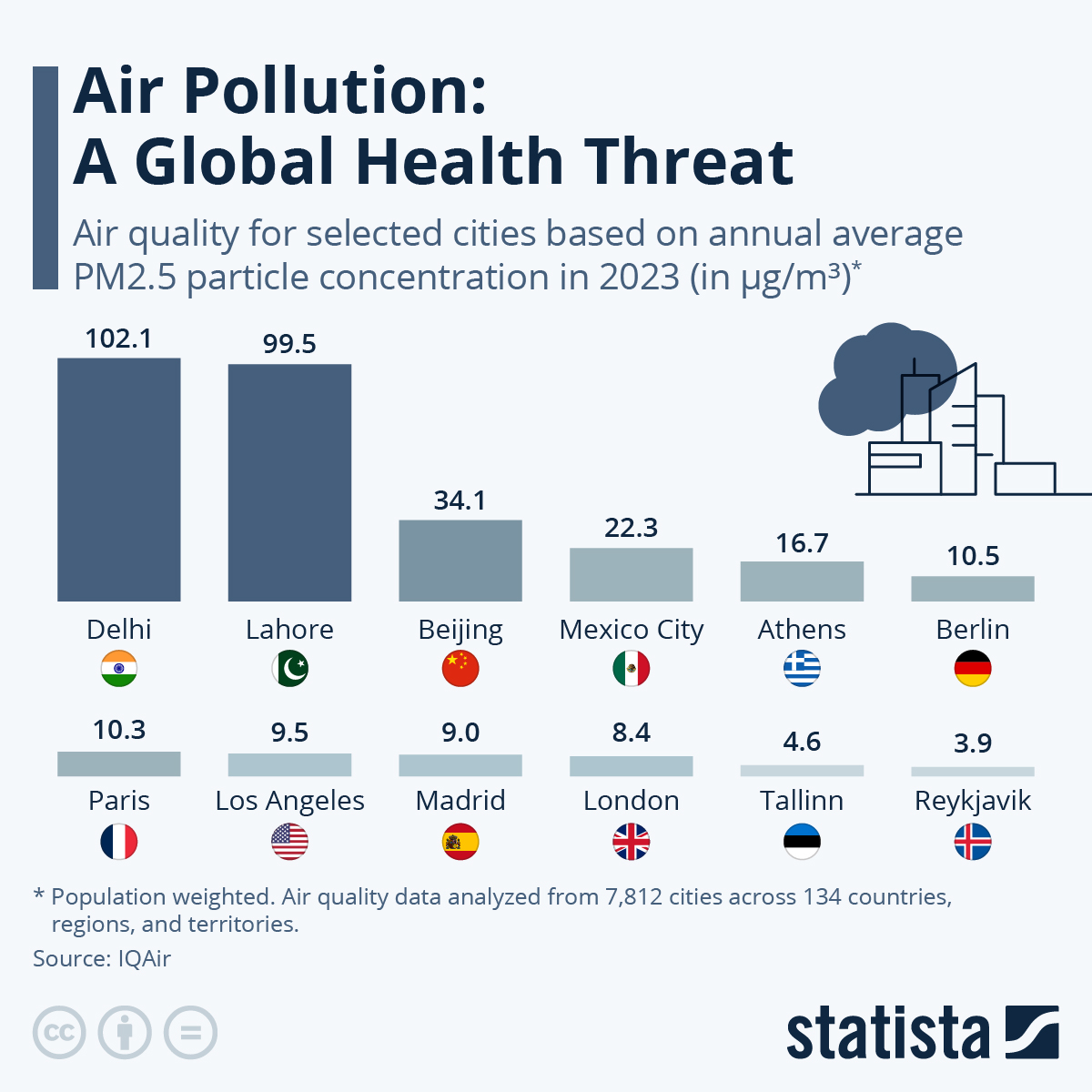The following chart shows how greatly air quality varies globally, with cities such as Pakistan’s Lahore (97.4 μg of PM2.5 particles per m3) and India’s Delhi (92.6) both exceeded WHO guidelines more than 10 times. At the other end of the spectrum lie cities such as Reykjavik in Iceland (3.3) and Tallinn in Estonia (4.8) which are among the few that meet guidelines.
Air pollution impacts already vulnerable communities particularly hard, with more than 90 percent of pollution related deaths occurring in low-income and middle-income countries, according to the report. Africa, as well as Central and South Asia were overrepresented for having the highest annual average PM2.5 concentrations weighted by population. This is even including the huge disparities in data availability between countries, with only 19 out of 54 African countries having had sufficient data to be usable in the paper.
IQAir defines PM2.5 concentration as the amount of fine particulate aerosol particles up to 2.5 microns in diameter. It is one of six major air pollutants commonly used in the classification of air quality and widely considered as the most harmful, in terms of its prevalence in the environment and the impacts it has on health. The latter includes causing and aggravating health conditions such as asthma, cancer, lung illness, heart disease and premature mortality.

No comments:
Post a Comment